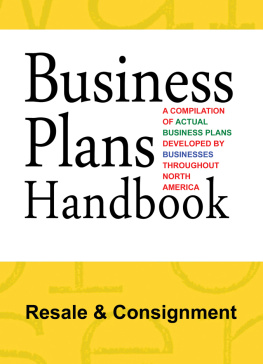TABLE OF CONTENTS
Guide
Novels for Students, Volume 45
Project Editor: Sara Constantakis
Rights Acquisition and Management: Margaret Chamberlain-Gaston
Composition: Evi Abou-El-Seoud
Manufacturing: Rhonda Dover
Imaging: John Watkins
Product Design: Pamela A. E. Galbreath, Jennifer Wahi
Digital Content Production: Allie Semperger
2014 Gale, Cengage Learning
ALL RIGHTS RESERVED. No part of this work covered by the copyright herein may be reproduced, transmitted, stored, or used in any form or by any means graphic, electronic, or mechanical, including but not limited to photocopying, recording, scanning, digitizing, taping, Web distribution, information networks, or information storage and retrieval systems, except as permitted under Section 107 or 108 of the 1976 United States Copyright Act, without the prior written permission of the publisher.
Since this page cannot legibly accommodate all copyright notices, the acknowledgments constitute an extension of the copyright notice.
For product information and technology assistance, contact us at Gale Customer Support, 1-800-877-4253.
For permission to use material from this text or product, submit all requests online at www.cengage.com/permissions.
Further permissions questions can be emailed to permissionrequest@cengage.com
While every effort has been made to ensure the reliability of the information presented in this publication, Gale, a part of Cengage Learning, does not guarantee the accuracy of the data contained herein. Gale accepts no payment for listing; and inclusion in the publication of any organization, agency, institution, publication, service, or individual does not imply endorsement of the editors or publisher. Errors brought to the attention of the publisher and verified to the satisfaction of the publisher will be corrected in future editions.
Gale
27500 Drake Rd.
Farmington Hills, MI, 48331-3535
ISBN-13: 978-1-4144-9488-3
ISBN-10: 1-4144-9488-2
ISSN 1094-3552
This title is also available as an e-book.
ISBN-13: 978-1-4144-9274-2
ISBN-10: 1-4144-9274-X
Contact your Gale, a part of Cengage Learning sales representative for ordering information.
Printed in Mexico
1 2 3 4 5 6 7 18 17 16 15 14
Banner in the Sky
James Ramsey Ullman
1954
Introduction
The 1954 novel Banner in the Sky is a mountaineering adventure tale by James Ramsey Ullman that was named a Newbery Honor Book. The protagonist is sixteen-year-old Rudi Matt, who is supposed to spend his time washing dishes but would rather be exploring the heights of the Citadel, the last unconquered summit of the Alps, which he dreams of one day climbing to the top. Although his mother and uncle try to restrain him, and in spite ofor perhaps because ofthe fact that his father died fifteen years ago in an attempt on the Citadel's peak, Rudi feels compelled to do whatever he can toward completing his father's quest.
Ullman was a very popular author in the mid-twentieth century. His credentials as an amateur mountaineer who climbed peaks in the American and Canadian Rockies, the Teton Range, the Andes, and elsewhere lent an air of authority to both his nonfiction and fiction on mountain climbing. He was enlisted as the official historian of the first American ascent of Mount Everest. One of the summits he reached was the Matterhorn, the emblematic mountain on the border of Switzerland and Italy that was first climbed in 1865. As he relates in the author's note that opens Banner in the Sky, the first ascent of the Matterhorn was the inspiration for his fictional tale, which takes place in the same year in an essentially similar Swiss locale. Ullman's descriptions evoke with heart-stopping realism the vertiginous heights and life-or-death choices confronted by mountaineers who wish to make history.
Author Biography
Ullman was born into a well-off family in New York City on November 24, 1907. His academic credentials allowed him to enter Princeton University, where he became an amateur mountaineer at age twenty and enjoyed a chance to climb to the peak of the Matterhorn. He graduated in 1929 and embarked on a career that would revolve around the literary arts for the next four decades. Publishing his Princeton thesis on English poet Percy Bysshe Shelley in 1930 as Mad Shelley, he proceeded to work as a newspaper reporter and features writer for several years. He then served as a theatrical producer through the mid-1930s. Among the dozen plays he worked on was the Pulitzer Prizewinning Men in White (1933). In 1938, he became an executive of the Works Progress Administration's Federal Theater Project, and that year he published The Other Side of the Mountain, a travelogue on a South American voyage he took across the Andes and along the Amazon River, following the route of sixteenth-century century Spanish explorer Francisco de Orellana. Ullman married just after leaving Princeton, in 1930; he would have two sons, divorce his first wife in 1945, and marry three times over the course of his life.
Ullman's profession as an independent writer was secured with his 1941 publication of High Conquest: The Story of Mountaineering, which earned him a reputation as the leading American authority on the topic. Though he was rejected from combat service during World War II, in 19421943 he served as an ambulance driver for the American Field Service, as attached to the British Eighth Army in Africa; he became a lieutenant and was decorated with the African Star. He then published the best seller The White Tower (1945), about wartime mountaineering in the Swiss Alps. After editing an anthology of mountaineering stories, Kingdom of Everest (1947), beginning in 1950 he would publish five novels in just five years, including Banner in the Sky in 1954. His other writings draw heavily on his travels in South America, East Asia, the South Pacific, and elsewhere.
The first ascent of Mount Everest in 1953 would be a lasting inspiration for Ullman. He teamed up with Tenzing Norgay, the Sherpa who led Sir Edmund Hillary to the summit, in the writing of Tenzing's autobiography, Tiger of the Snows (1955). Although Ullman was denied a spot with the American expedition to K2 in 1953, his dream to reach the Himalayas was fulfilled in 1963, when he was invited to accompany the first American expedition to the summit of Everest. Ullman suffered an attack of thrombophlebitis that kept him from reaching the base camp, at just below 18,000 feetEverest's peak elevation is 29,028 feetbut his intimate account of the expedition, with contributions from the participating climbers, was published as Americans on Everest: The Official Account of the Ascent Led by Norman G. Dyhrenfurth (1964). With some twenty titles to his credit, Ullman died at the age of sixty-three in Boston, Massachusetts, on June 20, 1971.
Plot Summary
Chapters 13
Banner in the Sky opens with a paragraph that frames the tale as one from a bygone era, about why the great Swiss peak called the Citadel is known to locals as Rudi's Mountain. In 1865, Rudi, a hotel dishwasher in Kurtal, sneaks out on a summer morning to go climbing. The cook, Teo, grumbles but at heart approves. Rudi dreams of being the first to reach the peak of the Citadel. He has traversed its glaciers some fifty times and circled the peak five times, scouting. Today, he hears a voice; someone is stuck in a glacial crevasse.






















